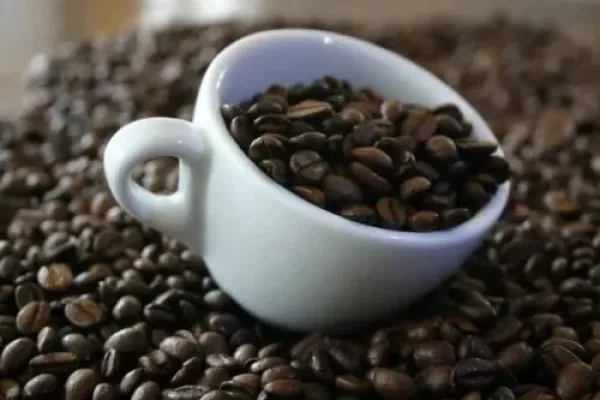The best part of waking up is likely to get more expensive.
Coffee futures are on a tear as regions of Brazil beleaguered by drought last year are heading for more of the same parched conditions. There’s been no significant rain for almost a month in Espirito Santo state, the nation’s top grower of the robusta variety. It’s gotten so dry that the government has reinstated limits on irrigation from rivers.
Prices for robusta, used in instant coffee, are near a four-year high in London on concern supplies will drop. That’s also boosting the aroma-rich arabica beans, with futures posting the biggest advance of 2017 among components of the Bloomberg Commodity Index. Last week, hedge funds lifted their bets on a rally for the first time in two months.
“There’s a lot of reason to be bullish,” said Harish Sundaresh, a portfolio manager and commodities analyst in Boston for the Loomis Sayles Alpha Strategies team, which oversees $5 billion. “We are starting the year with very low inventory, and the major centers of production, Brazil and Vietnam, will have lower production.”
Fund Positions
The net-long holding for arabica coffee surged 60 percent to 13,565 futures and options in the week ended Jan. 10, according to U.S. Commodity Futures Trading Commission data published three days later. That’s the biggest gain since June. Prices jumped 4.5 percent last week to $1.493 a pound on ICE Futures U.S. in New York, the largest rally since October. Robusta futures in London climbed 2.9 percent last week.
The 2016 robusta crop in Brazil, the world’s biggest coffee grower and exporter, shrank to the smallest in a decade. Futures posted an annual gain of 40 percent, while arabica climbed 8.2 percent.
There was some hope of relief late last year as rivers recovered in Espirito Santo and the state’s government lifted restrictions on pumping water that had been in place since October 2015. But the optimism was short-lived. As dry weather returned, the irrigation limits were reinstated last week.
Arthur Heleodoro Covre, a fifth-generation farmer who’s planted 2,500 hectares (6,178 acres) of robusta across eight farms in the northern part of Espirito Santo, said that he was only able to pump enough water for about 30 percent of his crops before the new ban.
Covre had initially estimated his harvest would reach 30,000 bags in the season that starts in April, but the drought means he will fall short of the forecast by at least 5 percent, he said in a telephone interview from Pinheiros municipality. A bag weighs 60 kilograms, or 132 pounds.
Adding to the supply woes, prolonged rains hurt crop quality in Vietnam, and a smaller harvest is also expected in Indonesia. With robusta getting harder to find, more coffee roasters are using arabica beans, pushing up prices for that commodity.
As demand climbs for arabica, stockpiles monitored by the ICE exchange have fallen for 13 straight quarters, the longest slump since the data begins in 1995. The inventories are near the lowest level since 2000.
Folgers Costs
Tighter supplies are feeding into retail costs. J.M. Smucker Co. last week said it boosted prices for the majority of its packaged-coffee products sold in the U.S. by 6 percent, on average. Smucker is the maker of Folgers, a top-selling brand known for its "best-part-of-waking-up" jingle.
Even as drought has plagued robusta regions, Brazil’s arabica crops benefited from generally favorable weather, which can provide a supply cushion. The government estimates farmers harvested a record crop of arabica beans in the current season. Citigroup Inc. last week raised its forecast for global production in the season by about 3 million bags to 148.2 million, also citing a constructive outlook for Colombia.
Still, the majority of Brazil’s arabica plants will transition into the lower-yielding half of coffee’s biennial harvest starting in May. That means next season’s crop could drop by as much as 30 percent, Cepea, a University of Sao Paulo research unit, said in a report last week.
At the same time, intense heat could further exacerbate the dry conditions for robusta plants. Since Jan. 1, the average high temperature in Espirito Santo’s growing areas was 32.9 degrees Celsius (91 Fahrenheit), according to Olivia Nunes, a meteorologist at weather forecaster Somar Meteorologia. That’s almost 2 degrees Celsius above the historical average.
“Taking into consideration the balance between supply and demand and the weather, volatility will probably be high in the next six months,” said Hernando de la Roche, senior vice president for INTL FCStone in Miami. “Longer term, low inventories, especially in producing countries, will support the market. The balance is tight.”
News by Bloomberg, edited by Hospitality Ireland









